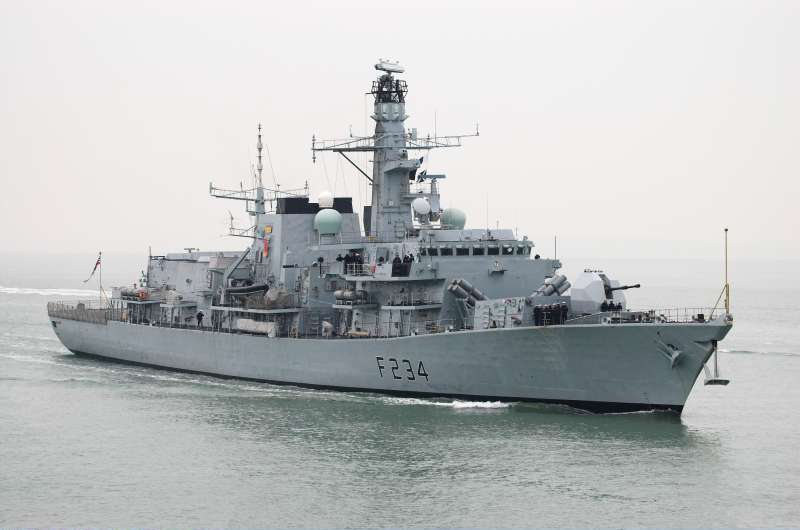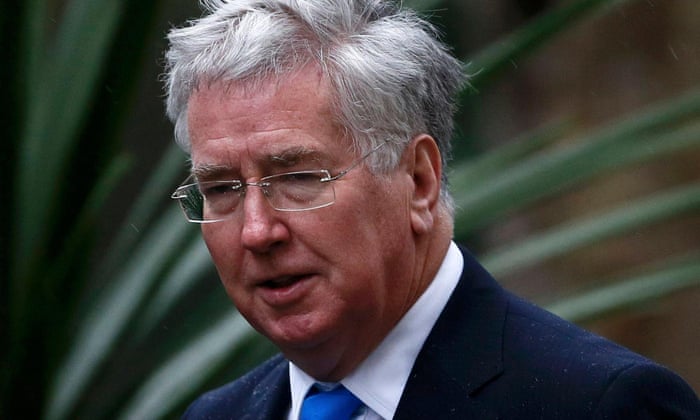mike2000 is back
ELITE MEMBER

- Joined
- Apr 12, 2015
- Messages
- 8,513
- Reaction score
- 19
- Country
- Location
Boeing's 737 MAX to undergo wind tunnel testing in the UK in partnership with BAE systems.
Home > Aircraft > News > Boeing 737 MAX wind tunnel testing begins at UK company QinetiQ
Boeing 737 MAX wind tunnel testing begins at UK company QinetiQ
February 21, 2012 4:10 pm Europe/London

A computer generated image of the Boeing 737 Max
The final phase of wind tunnel testing has begun on new Boeing’s 737 MAX airliner programme at the QinetiQ facility in Farnborough.
Engineers are working to substantiate the forecasted low-speed performance of the 737 MAX on take-off and landing. QinetiQ’s 5-metre wind tunnel has been used by Boeing to help design high lift systems for improved take-off and landing performance for numerous programmes including the 787 family, 777 family, the 747-8 and the Next-Generation 737 family.
“QinetiQ’s dedicated team has over twenty years’ experience testing for Boeing Commercial Airplanes which enables us to provide a highly specialised service for the 737 MAX programme”, said Andrew Yarrow, Head of Farnborough Facilities at QinetiQ.
The Boeing 737 MAX is a new engine variant of the world’s best-selling aeroplane and builds on the strengths of today’s Next-Generation 737. The 737 MAX incorporates the latest-technology CFM International LEAP-1B engines to deliver the highest efficiency, reliability and passenger appeal. Airlines operating the 737 MAX will see a 10-12% fuel burn improvement over today’s most fuel efficient single-aisle airplanes and a 7% operating cost per-seat advantage over tomorrow’s competition.
Michael Teal, chief project engineer and deputy program manager, Boeing 737 MAX programme commented, “This final phase of wind tunnel testing confirms that we are on track to complete our design goals and deliver the 737 MAX to customers beginning in 2017”.
http://www.pilotcareernews.com/wind-tunnel-testing-begins-at-uk-company-qinetiq-for-boeing-737-max/

UK to send five ships to Baltic as part of Nato buildup against Russia

HMS Iron Duke, pictured , is to be deployed in the Baltic. Photograph: Royal Navy/PA
The UK is to send five extra ships to the Baltic as part of a Nato buildup against Russia.
A sizeable contingent of British troops are also likely to contribute to a new Nato force of up to 6,000 to be stationed on a rotational basis in six countries bordering Russia.
A decision on troop numbers is expected to be taken at the Nato summit in Warsaw in the summer. The eastern European countries – Poland, Bulgaria, Romania, Latvia, Lithuania and Estonia – have been pressing for boots on the ground from the US, Britain and Germany, in the belief that their presence would act as a deterrent to Russia.
The naval deployment and the expected troop contributions are part of what Nato describes as a more muscular approach to Russian president Vladimir Putin.

Defence minister Michael Fallon called the move by Nato a ‘strong message to our enemies’. Photograph: Stefan Wermuth/Reuters
The UK, which already has planes operating in the Baltic states and regularly sends troops to the region on training exercises, is to deploy a Type 23 Frigate – HMS Iron Duke – with the Nato force in the Baltic, as well as a Type-45 destroyer and three minesweepers, with, in all, 530 naval personnel. Britain is also looking forward to deploy Nuclear subs in the region if necessary.

Type 45 destroyer HMS Dragon is to be deployed in the baltics.
As noted in the Strategic Defence and Security Review 2015, Russia is mid-way through a programme of major investment to modernise and upgrade its military, including its nuclear forces. Its behaviour will continue to be hard to predict, and, though highly unlikely, we cannot rule out the possibility that it may feel tempted to act aggressively against NATO Allies.
The Royal Navy routinely allocates vessels to NATO's Standing Maritime Groups and Standing Countermeasures Groups, which are multinational, integrated maritime forces permanently available to NATO to perform tasks ranging from participating in exercises to intervention missions.
This year the UK's contribution consists of: three Mine Countermeasures Vessels, on four month deployments in rotation; one Frigate for six months, which is the first to be deployed to this task since 2010; and a Destroyer, from October 2016.
http://www.theguardian.com/politics...ltic-as-nato-boosts-presence?CMP=share_btn_tw
http://www.parliament.uk/business/p...ts/written-question/Commons/2016-02-25/28576/
Home > Aircraft > News > Boeing 737 MAX wind tunnel testing begins at UK company QinetiQ
Boeing 737 MAX wind tunnel testing begins at UK company QinetiQ
February 21, 2012 4:10 pm Europe/London

A computer generated image of the Boeing 737 Max
The final phase of wind tunnel testing has begun on new Boeing’s 737 MAX airliner programme at the QinetiQ facility in Farnborough.
Engineers are working to substantiate the forecasted low-speed performance of the 737 MAX on take-off and landing. QinetiQ’s 5-metre wind tunnel has been used by Boeing to help design high lift systems for improved take-off and landing performance for numerous programmes including the 787 family, 777 family, the 747-8 and the Next-Generation 737 family.
“QinetiQ’s dedicated team has over twenty years’ experience testing for Boeing Commercial Airplanes which enables us to provide a highly specialised service for the 737 MAX programme”, said Andrew Yarrow, Head of Farnborough Facilities at QinetiQ.
The Boeing 737 MAX is a new engine variant of the world’s best-selling aeroplane and builds on the strengths of today’s Next-Generation 737. The 737 MAX incorporates the latest-technology CFM International LEAP-1B engines to deliver the highest efficiency, reliability and passenger appeal. Airlines operating the 737 MAX will see a 10-12% fuel burn improvement over today’s most fuel efficient single-aisle airplanes and a 7% operating cost per-seat advantage over tomorrow’s competition.
Michael Teal, chief project engineer and deputy program manager, Boeing 737 MAX programme commented, “This final phase of wind tunnel testing confirms that we are on track to complete our design goals and deliver the 737 MAX to customers beginning in 2017”.
http://www.pilotcareernews.com/wind-tunnel-testing-begins-at-uk-company-qinetiq-for-boeing-737-max/

UK to send five ships to Baltic as part of Nato buildup against Russia

HMS Iron Duke, pictured , is to be deployed in the Baltic. Photograph: Royal Navy/PA
The UK is to send five extra ships to the Baltic as part of a Nato buildup against Russia.
A sizeable contingent of British troops are also likely to contribute to a new Nato force of up to 6,000 to be stationed on a rotational basis in six countries bordering Russia.
A decision on troop numbers is expected to be taken at the Nato summit in Warsaw in the summer. The eastern European countries – Poland, Bulgaria, Romania, Latvia, Lithuania and Estonia – have been pressing for boots on the ground from the US, Britain and Germany, in the belief that their presence would act as a deterrent to Russia.
The naval deployment and the expected troop contributions are part of what Nato describes as a more muscular approach to Russian president Vladimir Putin.

Defence minister Michael Fallon called the move by Nato a ‘strong message to our enemies’. Photograph: Stefan Wermuth/Reuters
The UK, which already has planes operating in the Baltic states and regularly sends troops to the region on training exercises, is to deploy a Type 23 Frigate – HMS Iron Duke – with the Nato force in the Baltic, as well as a Type-45 destroyer and three minesweepers, with, in all, 530 naval personnel. Britain is also looking forward to deploy Nuclear subs in the region if necessary.

Type 45 destroyer HMS Dragon is to be deployed in the baltics.
As noted in the Strategic Defence and Security Review 2015, Russia is mid-way through a programme of major investment to modernise and upgrade its military, including its nuclear forces. Its behaviour will continue to be hard to predict, and, though highly unlikely, we cannot rule out the possibility that it may feel tempted to act aggressively against NATO Allies.
The Royal Navy routinely allocates vessels to NATO's Standing Maritime Groups and Standing Countermeasures Groups, which are multinational, integrated maritime forces permanently available to NATO to perform tasks ranging from participating in exercises to intervention missions.
This year the UK's contribution consists of: three Mine Countermeasures Vessels, on four month deployments in rotation; one Frigate for six months, which is the first to be deployed to this task since 2010; and a Destroyer, from October 2016.
http://www.theguardian.com/politics...ltic-as-nato-boosts-presence?CMP=share_btn_tw
http://www.parliament.uk/business/p...ts/written-question/Commons/2016-02-25/28576/










 The Welsh sailors will feel right at home!
The Welsh sailors will feel right at home!



